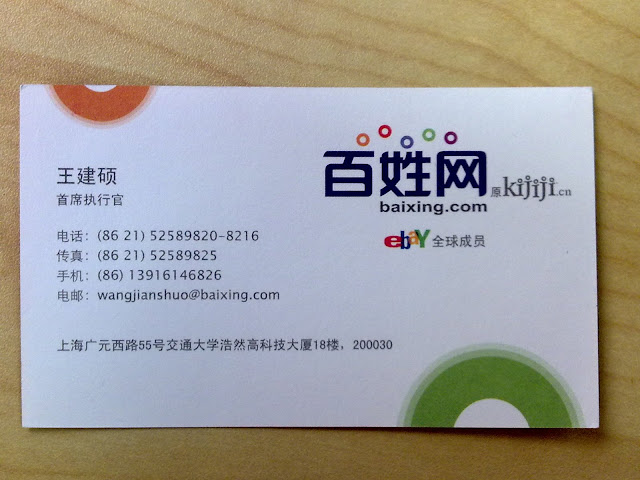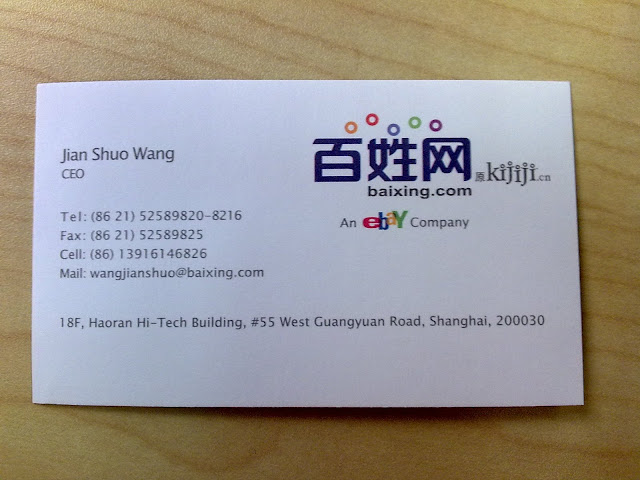I have already decided leave this Chris Devonshire Ellis (a.k.a cde) alone after I briefly wrote this blog entry: Who is Chris Devonshire Ellis. As I said, I don’t care who he is – good or bad – it is just completely not my business. He was brought to my attention just because the three pretty silly threatening emails, and two phone calls. Well. I received a few of them because of some other people’s comment on my blog (and interestingly, more than half of the threatening letter comes because they want me to delete their own comment on this blog, like this).
But, things get more and more interesting these days, and I cannot help write something about this person, to provide some more information to help people understand some aspects of this “well-known” and “well-connected” guy.
Threatening Instead of Requesting
As I stated in my previous blog, he asked me to remove some comments about him on this blog entry: Second-Generation Identity Card. Then he wrote blog stating that it is about Chinese people libel about foreign people. I even don’t bother to argue that it is him who distinguish Chinese and foreign people in treating comments.
Now the problem is, it is not about requesting for something that is right (or wrong), it is all about threatening.
Recently, in his email to Lostlaowai.com, he threatened to report his website to Public Security Bureau to revoke his visa because Ryan wrote an article: Would the real Chris Devonshire-Ellis please stand up. Unfortunately, this entry was removed, and I fully understood that he actually does not deserve any attention. This CDE has done this to many bloggers, including myself. In all these letter, he not only stated that he asked certain content about him removed (which if he has the right evidence, it is pretty reasonable request), he *threaten* people of all kinds of terrible things.
The Threatening Emails I Got
Although he treated other bloggers and me terribly, I still want to play nicely to certain rules. Although I believe I have very reason to publish the threatening emails on this blog (I am not sure though, any legal advice from my readers?), I choose not to, and just quote indirectly about the pretty length emails.
The last email (the third similar emails) he sent to me, he mentioned that he will have meetings with the Minister of Industry, and he told me that he will bring this matter concerning me, and my employer to the minister’s personal attention. He also threatened to take legal steps for damages for defamation. I have no problem that he brings this matter to the court at all – follow the law, and I think that is the simplest way to do it, but it sounds so silly and even fool to threaten a blogger to bring his blog to the minister of the country. Wow. I will be flattered if you do so. In the end, he re-stated that I must face the consequences if I do not follow exactly what he told me to do.
The previous two are equally lengthy and “rude” (sorry but this was my feeling). Interestingly, after the three emails, I received phone call to my mobile from a girl who claimed to be his lawyer, and asked me to remove the comments, and my new blog article about him. I asked her to send me emails or fax and tell me which part of my article has problems, and she didn’t reply ever since. (I am not surprised to receive emails, but feel pretty funny that his employee also tried so hard to “protect” his boss’s already pretty bad image online – search the term Chris Devonshire Ellis on Google to see).
Old Stories in the New Background
When all these happened, I did a search in my own inbox, and found out this Chris Devonshire Ellis has already been the “old friend” of blogger, and expat community. My friends have ever been threatened by this guy back in 2007, and this person sent thousands of comments of the similar thing to his website. Pretty amazing, isn’t it?
Then I took some time to read the article about Chris Devonshire Ellis that I posted: Second-Generation Identity Card. If you read the comment carefully, you see many people stood up to express their support to Chris Devonshire Ellis. I promised not to reveal private information about commenters, but what I can tell you is, it is the same IP address, and same client behind all these supporting comments, and the IP address comes from Hong Kong SAR. There are more and more these comments coming before I was forced to close the comment section of that article. I am sure that many bloggers experienced the same thing – tell us if you are also one of the victim of this CDE.
Chris Devonshire Ellis on the News
The even more interesting movement recently was about the fake stories, and fake interview this Chris Devonshire Ellis claimed to conducted with Chinese officials. And China Bank Regulatory Committee (CBRC) put an announcement on their website to tell the truth. His false report even made big jump in the RMB to USD exchange rate. Check out some bloggers’ report on this issue:
#cde Became a Top 10 Trend in Twitter
You can check out Twitter now at channel #cde. It is pretty hot – I mean now, at 0:05 AM, February 21, 2009 (Shanghai Time). So many people annoyed by this single person #cde gathered there, and the channel #cde even became top 10 trends (hottest topic on Twitter worldwide) today. I even started to admire how powerful this person became to have so many die-hard enemies on the Internet – not an easy job to accomplish.
Finally, Let’s Stop Here after Learning the Lessons
There are some lessons to learn for #cde this time.
- It is OK to send legal statement requesting something as long as there is a legitimate reason behind it, but it is NOT OK to threaten anyone, just like report to PBS, mention something to high officials, or promise a DDOS attack – bloggers typically won’t do something just because he/she is scared of this.
- To post too many positive comments under different IDs is too simple and naive. People know that, and it is just a matter of time about when people discover it.
- Don’t over-react – this is a typical case where a very small comment that no one will notice became a big event in blogsphere. It can be completely avoided if Chris Devonshire Ellis, and his employees didn’t over-react to a level that no one can tolerate.
- A bonus tip: to have a phone call is even worse than threatening email – that makes people really angry.
Chris, you have my email and mobile phone – it has been listed on the homepage of this blog for 7 years. Feel free to write or call, but please be aware, as I started in my privacy statement, I reserve the right to publish content you sent to email address jianshuo @ hotmail.com, or call my mobile phone. If you don’t want your threatening email to be published, don’t send them, and you are encouraged to directly go to court to sue me, or even better, talk about this blog with your high-ranking official friends that you imagined by yourself. Peace. I just hope I can get back to my normal life of blogging (a much more fun work to do than dealing with #cde), and just let this ridiculous event disappear from everyone’s attention.




































